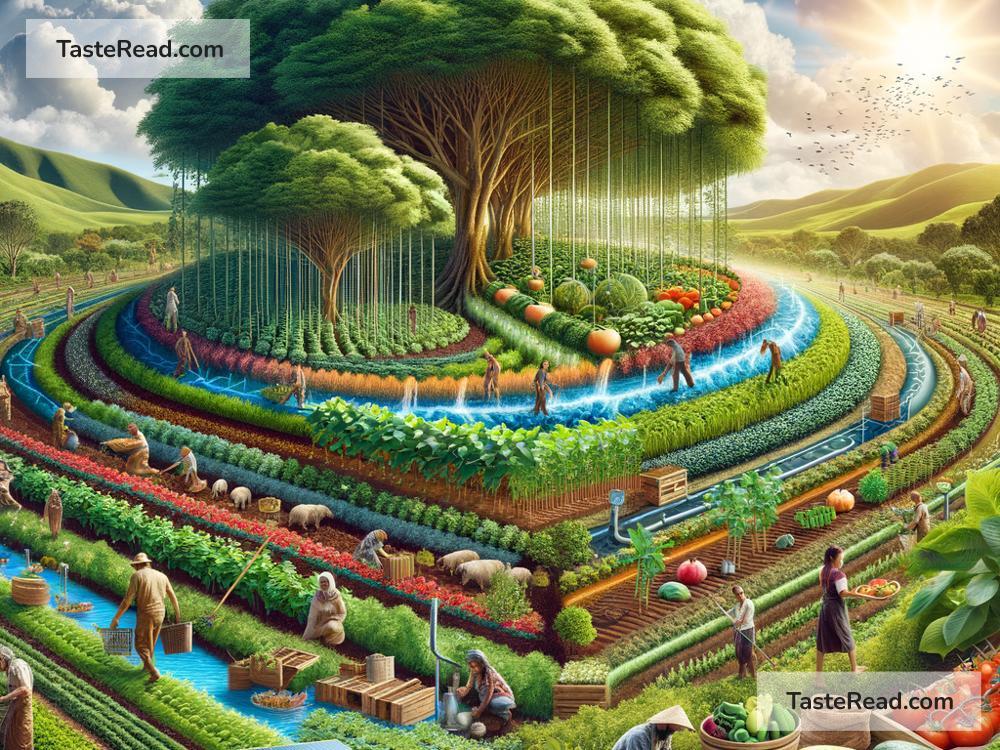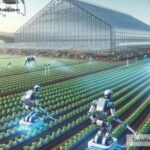The Future of Agroforestry: A Blend of Farming and Forests for a Better World
Agroforestry is like a secret recipe for the planet’s health. It combines farming and forests to grow crops, raise animals, and restore nature—all in the same space. And as the world faces challenges like climate change, soil depletion, and food insecurity, agroforestry could be the superhero solution we’ve been waiting for. Let’s explore the future of agroforestry in simple words and discover why this approach could change the way we produce food and protect our environment.
What Is Agroforestry?
Before diving into the future, let’s start with the basics. Agroforestry is a farming method where trees, crops, and animals work together in harmony. Instead of farmers chopping down all the trees to make space for planting crops, they keep the trees and use them in smart ways. For example, farmers might plant fruit trees alongside vegetables or raise cows in shaded pastures under tree canopies.
This method isn’t new—it’s been used by traditional communities for centuries. But now, scientists, environmentalists, and farmers are rediscovering it as a way to solve modern problems. Agroforestry doesn’t just grow food; it also restores degraded land, boosts biodiversity, stores carbon, and helps communities thrive.
Why Is Agroforestry Important?
The world is changing fast, and so are the challenges that farmers face. Land is becoming less fertile, water supplies are drying up, and extreme weather is hitting farms harder than ever. At the same time, food demand is rising as the global population grows. Agroforestry offers a way to tackle these challenges by turning farming into a more sustainable and resilient activity.
Here are some key benefits of agroforestry:
-
Climate Protection: Trees in agroforestry systems act like carbon sponges, absorbing greenhouse gases from the atmosphere. This helps fight climate change. Plus, the shade from trees can cool the land and slow down global warming.
-
Healthy Soil: Over time, the soil in many areas becomes overused and loses essential nutrients. Trees help prevent this by holding soil in place with their roots and adding organic matter through fallen leaves, which act as natural fertilizer.
-
Biodiversity Boost: By mixing crops, trees, and animals, farmland becomes a home for birds, insects, and other wildlife. This creates a more balanced ecosystem.
-
Sustainable Livelihoods: Agroforestry allows farmers to diversify their income. They can grow crops alongside trees that yield fruits, nuts, or timber, ensuring they earn money even if one crop fails.
-
Climate Adaptation: With unpredictable weather patterns becoming the norm, agroforestry systems are more resilient to storms, floods, and droughts. Trees help control water flow, prevent soil erosion, and shield crops from bad weather.
What Could the Future of Agroforestry Look Like?
The future of agroforestry is bright, but it won’t happen overnight. Governments, businesses, scientists, and communities need to work together to make it a widespread practice. Here are some exciting possibilities for the future:
-
Technology Meets Nature: Imagine drones planting seeds for agroforestry systems or sensors monitoring soil health to guide farmers on how to care for their crops and trees. Technology can supercharge agroforestry by making it easier to implement and manage.
-
Government Support: Governments around the world might start funding agroforestry programs as they realize its benefits. Policies could encourage farmers to add trees to their land while offering subsidies or tax breaks as rewards.
-
Training Farmers: Not every farmer knows how to adopt agroforestry practices, especially those used to traditional methods. Future programs could focus on giving farmers the knowledge and tools they need to succeed.
-
Global Agroforestry Networks: There could be international networks where farmers, scientists, and environmentalists share ideas, research, and success stories. This would encourage collaboration and inspire innovation.
-
Urban Agroforestry: Trees and crops won’t just be limited to rural areas. Cities could start using agroforestry principles to create green spaces that grow food and improve urban environments.
-
Carbon Credits: As more businesses look for ways to offset their carbon emissions, farmers practicing agroforestry might benefit by selling carbon credits. This would offer an additional source of income and motivate others to adopt tree-based farming systems.
Challenges to Overcome
Of course, the future of agroforestry isn’t without obstacles. Some farmers might hesitate to change their ways, especially if they worry that trees will compete with their crops or reduce yields. Educating communities about the long-term benefits of agroforestry will be key.
Additionally, large-scale farming companies might resist agroforestry because it doesn’t fit the current model of monoculture (growing single crops over large areas). Shifting global agricultural systems toward agroforestry will require structural changes and a willingness to prioritize sustainability over short-term profits.
Lastly, financing agroforestry systems can be tricky. It takes time for trees to grow and provide benefits like fruits or timber, so farmers may need financial support to bridge the gap.
Conclusion
The future of agroforestry is full of hope and potential. It offers a way to grow food in a world facing climate change, protect the environment, and build stronger rural communities—all at the same time. Scientists are optimistic, governments are taking notice, and farmers are starting to see the value.
If we prioritize agroforestry, the landscapes of tomorrow could feature farms filled with trees, crops, and wildlife thriving together in harmony. It’s not just about growing food—it’s about growing a future that’s healthier, greener, and better for everyone. With teamwork and investment, agroforestry could become a powerful tool for building a sustainable world for generations to come.


